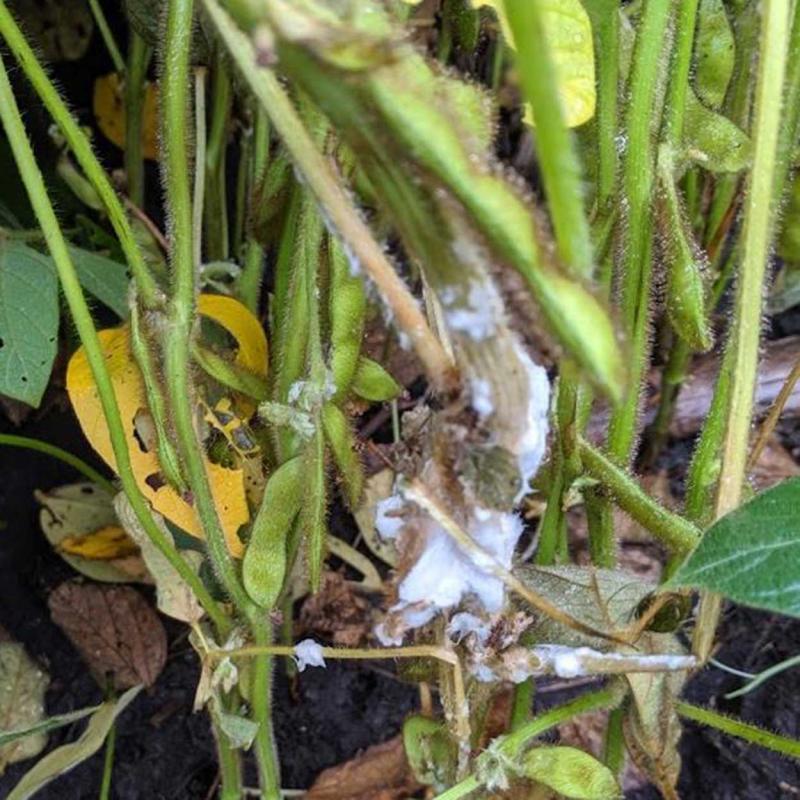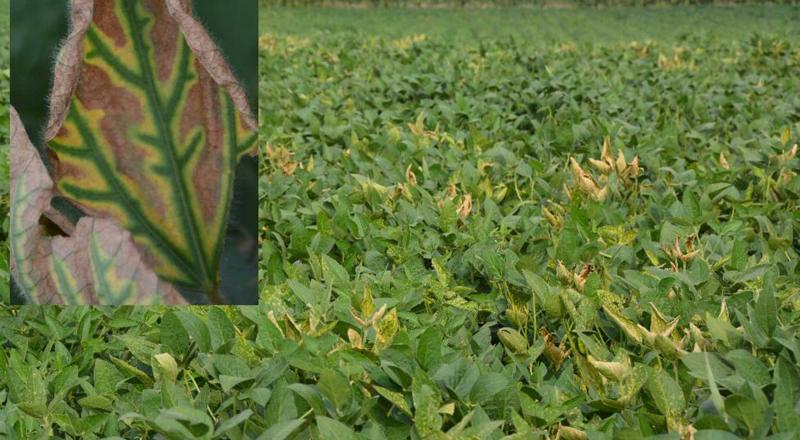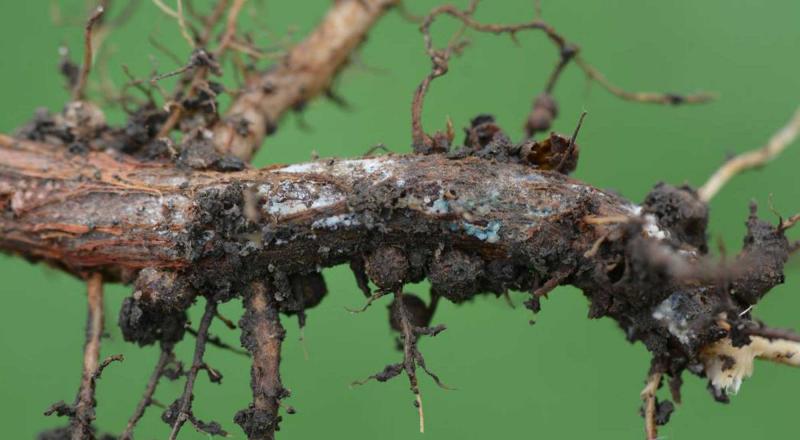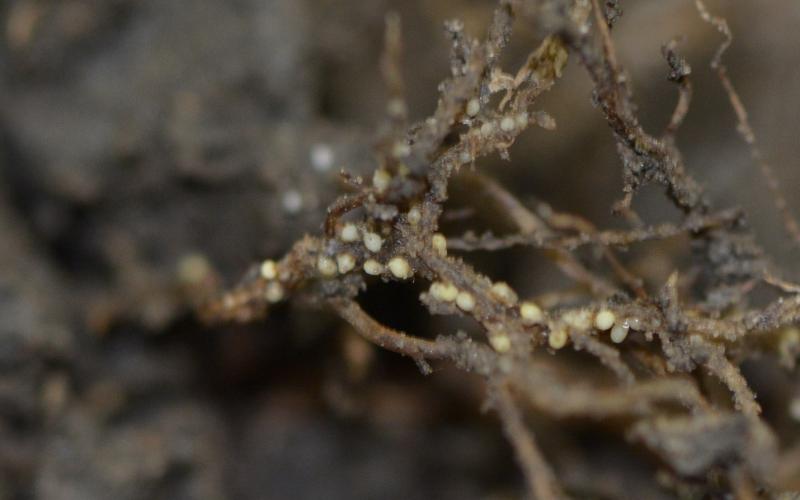Originally written by Emmanuel Byamukama, former SDSU Extension Plant Pathologist.
White mold and sudden death syndrome are starting to develop in a number of soybean fields. These two diseases develop starting at the soybean flowering growth stage and can occur throughout the rest of the soybean growing season. Initial symptoms on the leaves can look similar for these two diseases. Examine the stems to differentiate between various diseases developing in soybeans at this time. SDS does not have in-season rescue treatments and the best time to manage white mold is at flowering growth stage. Scouting for diseases developing at this time will help in determining proactive management decisions for future seasons.
White Mold

White mold infection is from spores (ascospores) released from mushroom-like structures called apothecia. The apothecia germinate from winter hardened survival structure, the sclerotia, once temperatures warm up in spring. When ascospores land on senescing flowers under wet (>12 hours continuous wetness for several days) and cool temperatures (<85°F), infection starts. The infection spreads above and below the point of infection. Once the lesion girdles the entire stem, the plant wilts and dies (Figure 1). Dead plants can be seen in clusters especially by the tree line (if a soybean field has a shelter belt) or high fertility areas of the field (tall and lush soybeans).
White mold can be managed through planting tolerant varieties, increasing row spacing (>20” rows), avoiding excessive nitrogen fertilizers (such as animal manure), and applying a fungicide at R1 (beginning flowering). For the fungicide to be effective, the type of the fungicide to be used, timing, and the coverage are important. Only a few fungicides have been found to reduce white mold severity. The list of fungicides against white mold can be found in this publication under the white mold column on 2nd and 3rd pages). Research shows that the best timing is R1 and where a high disease pressure is present, a follow-up fungicide at R3 may be considered.
Sudden Death Syndrome

Sudden death syndrome (SDS) infection takes place during the seedling stage but the foliar symptoms develop after flowering.
The SDS pathogen survives in soil and under wet and cool conditions at planting, the pathogen infects soybean seedlings. It expands to the taproot and lower parts of the stem.
Frequent rainfall after soybean flowering promotes the movement of the toxin produced by SDS pathogen from the roots to the leaves. This toxin causes the typical SDS symptoms of bright yellow blotches between leaf veins (Figure 2).

To confirm SDS, split the stem longitudinally and examine the lower part of the stem. The cortex should be discolored. If the plant is uprooted gently and the soil is moist, blue mycelia may be observed on the taproot surface (Figure 3).
SDS is managed through planting tolerant varieties, planting in well drained warm soils (>55°F), using fungicide seed treatments (products containing Fluopyram or pydiflumetofen), and managing well soybean cyst nematode (through resistant varieties, rotation and nematicide seed treatment) since SCN can increase the risk for SDS.

